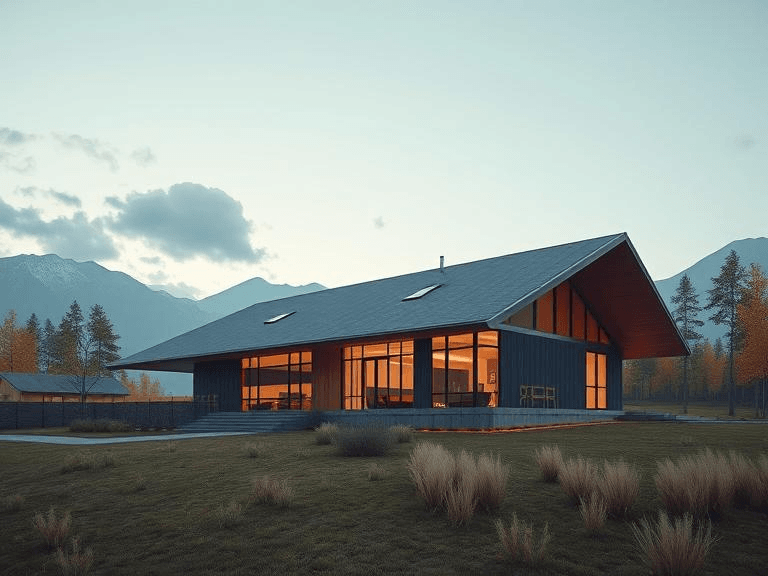
Repairing roofs during winter presents unique challenges that can significantly affect both safety and the quality of the work performed. One of the primary hazards during this season is the presence of icy conditions, which can create dangerously slippery surfaces. Ice formation is often exacerbated by fluctuating temperatures, leading to the potential for black ice on roofs and on ladders, making it crucial for repair personnel to be aware of their environment when working. Proper footwear with adequate traction is essential to reduce the risk of slipping.
Another significant hazard is snow accumulation. Excessive snow on rooftops can increase the weight on the structure, leading to potential structural failure if repairs or maintenance are not conducted with caution. When planning any repair work, it is vital to assess the snow load and consider clearing accumulated snow before proceeding. Additionally, tools designed for safe removal of snow can help minimize risk. In some cases, professional assistance may be required to safely remove snow buildup prior to repairs.
Extreme temperatures present yet another concern. Cold weather can lead to reduced dexterity and control when handling tools, increasing the likelihood of accidents. Moreover, it can impact the effectiveness of certain repair materials, such as sealants and adhesives, potentially compromising the integrity of the repair. Before starting any work, it is essential to evaluate weather conditions and consider scheduling repairs for milder days when hazards are minimized.
Recognizing these winter-specific hazards is a critical step toward ensuring safety while repairing roofs. By taking heed of icy conditions, snow accumulation, and extreme temperatures, individuals can better prepare themselves to undertake roof work while prioritizing safety. Proper planning and awareness can mitigate the risks associated with repairing roofs during winter, fostering a safer work environment.
Preparing Your Tools and Equipment
When embarking on roof repairs during winter, the correct selection and preparation of tools and equipment is paramount for ensuring safety. The winter months often bring unique challenges, such as icy surfaces and biting cold, which necessitate the use of specialized equipment to mitigate risks associated with roofing repairs. First and foremost, a sturdy and reliable ladder is essential; however, it is advisable to enhance stability by utilizing ladder stabilizers. These devices prevent the ladder from shifting, providing a secure base while working at heights. Additionally, anti-slip footwear is crucial for maintaining grip on potentially icy or slick surfaces. Footwear with rubber soles designed for traction can significantly reduce the likelihood of falls.
In addition to ladders and footwear, having the right hand tools is essential. For roofing repairs in winter, ensure that your tools are made of materials that can withstand low temperatures without becoming brittle. Furthermore, consider using hand tools with ergonomic designs, as these reduce strain in cold weather, allowing for a more comfortable working experience. Whether it’s roofing nails or materials required for patching, make sure everything is easily accessible and checked for functionality before beginning any repair work.
Moreover, to ensure your tools remain functional in cold conditions, it is advisable to store them in a warm environment prior to use when possible. Cold temperatures can adversely affect both battery-operated and manual tools. Checking the batteries and maintaining tools regularly is key to a successful repair process. Remember, working in cold weather presents specific hazards, thus taking these safety tips for repairing roofs during winter can greatly enhance your overall safety and efficiency.
Assessing Your Roof Before Work
Before embarking on repairs during winter months, it is critical to conduct a thorough assessment of your roof. The winter season can exacerbate existing roof issues, so understanding the structural integrity of your roof is paramount. Begin by checking for visible signs of wear, such as cracks, missing shingles, or sagging areas. Snow accumulation can disguise these problems, so it’s essential to remove snow carefully while inspecting the surface beneath.
Another important aspect of assessing your roof involves determining when it may be necessary to postpone repairs. Safety must always be the priority, particularly in winter when conditions can be hazardous. If the roof is slick with ice or if temperatures are extremely low, it is advisable to delay work until conditions improve. This not only protects your safety but also ensures a more effective repair can be conducted when the weather is more favorable.
Additionally, recognizing signs of damage that may pose additional risks is essential in your assessment. Look for leaks, water stains on your ceilings or walls, or mold growth, which could indicate underlying issues. These signs often suggest that the roof may require more extensive repairs beyond what was initially anticipated. Documenting these observations can provide valuable insight for professionals if you opt to hire a contractor.
In conclusion, proper assessment of your roof before repairs is crucial, especially during winter. By evaluating structural integrity, recognizing hazardous conditions, and identifying signs of damage, you can determine the best course of action. Following these safety tips for repairing roofs during winter not only enhances your safety but also contributes to a more effective repair process.
Dress for the Weather: Proper Attire
When it comes to repairing roofs during winter, proper attire is not just a matter of comfort; it is a crucial aspect of ensuring safety. Cold temperatures can lead to numbness, decreased dexterity, and an increased risk of accidents. Therefore, it is important to dress appropriately for both insulation and flexibility. Layering clothing is advisable—starting with a moisture-wicking base layer, followed by insulating materials, and finally, a waterproof outer layer that shields against wind and precipitation.
Footwear is another critical component of winter roofing safety. Insulated, waterproof boots with non-slip soles provide necessary grip on icy surfaces, reducing the likelihood of slips and falls. The boots should also offer adequate ankle support to enhance stability when navigating uneven rooftops. It is recommended to choose footwear that can accommodate thermal socks while still allowing for adequate movement.
The hands are particularly susceptible to cold, so investing in high-quality gloves is essential. Insulated gloves that feature a non-slip grip allow you to maintain dexterity while protecting against the cold. Look for gloves that are specifically designed for construction work, ensuring that they are both warm and functional. Additionally, wearing a pair of glove liners can provide extra warmth and flexibility.
Protective eyewear should also be considered as part of your winter repair gear. This can help prevent snow glare from affecting your visibility, as well as protect your eyes from flying debris. Finally, donning a warm hat or a helmet with a thermal lining can help regulate body temperature and improve overall comfort during the roofing process. By adhering to these essential safety tips for repairing roofs during winter, you can ensure not only your comfort but also your safety while completing your roofing project.

Safety Practices for Climbing Ladders and Scaffolding
When approaching roof repairs during the winter months, the use of ladders and scaffolding requires careful consideration to ensure safety. Icy conditions can significantly increase the risk of accidents, making it imperative to adopt specific safety practices. First and foremost, always inspect your ladder before use. Ensure that it is in good condition, free of any damage, and appropriate for the tasks at hand. A ladder with a high weight capacity is advisable, especially when carrying tools and materials.
One critical safety tip when using a ladder is to maintain three points of contact at all times—two hands and one foot or two feet and one hand. This practice enhances stability while climbing and reduces the chance of slipping. Furthermore, positioning the ladder on a stable, level surface is essential. If the ground is icy, consider using a ladder stabilizer or traction devices to provide additional grip and prevent sliding.
For those requiring extended access to elevated surfaces, scaffolding may be the preferred method. This provides a wider base and allows workers to move about more freely. Always ensure that scaffolding is set up on secure ground and check that all components are adequately assembled. Using guardrails around the platform can further enhance safety, especially when working in winter conditions, as they provide a barrier against accidental falls.
Using double ladder safety techniques is advisable when working on roofs during winter. This entails securing a second ladder nearby for emergency access and ensuring that one person remains at the base to assist. Properly securing the ladder against icy surfaces can be done by employing stabilizing measures such as employing ladder levelers or placing sandbags at the ladder’s feet. By following these safety tips for repairing roofs during winter, the risks associated with working at heights can be significantly minimized.
Working With Snow and Ice: Dos and Don’ts
Repairing roofs during winter poses unique challenges, particularly when it comes to snow and ice. To ensure safety while tackling these elements, several key considerations must be kept in mind. First and foremost, it is crucial to thoroughly assess the roof’s condition before starting any work. Inspecting for ice dams or excessive snow accumulation can help determine if the roof is safe to walk on. A general rule is to avoid working on roofs covered in a thick layer of ice, as this can significantly increase the risk of slips and falls.
When snow needs to be removed, it is essential to utilize the right tools. Use a roof rake to safely pull snow down from the edge of the roof, which reduces the risk of damage to shingles and the underlying structure. Ensure that the rake is long enough to allow the worker to remain on the ground, minimizing the need to climb onto the roof. If climbing is necessary, consider using a harness that is connected to a secure anchor. This is a vital safety tip for repairing roofs during winter since it prevents falls and allows for safe movement on slippery surfaces.
Besides ensuring personal safety, it’s equally important to take precautions to protect the roof itself. Avoid using metal shovels or rakes, as they can scratch and damage roofing materials. Instead, opt for plastic or rubber alternatives. Additionally, when working around ice, be conscious of areas that may not be visible but are still particularly slick, such as valleys and eaves. One effective strategy is to work in pairs, allowing one person to maintain vigilance on safety while the other focuses on the task at hand.
In conclusion, adhering to these safety tips for repairing roofs during winter can significantly reduce the risk of accidents while ensuring that the repair work is completed effectively. Proper planning and the use of appropriate tools are vital components for a successful endeavor during this challenging season.
Recognizing When to Call Professionals
When it comes to repairing roofs during winter, recognizing the right time to enlist professional help is crucial. In certain situations, attempting to manage repairs on your own may not only lead to improper fixes but also pose significant safety risks. One common scenario is dealing with extensive ice dams. These ice buildups can block proper drainage, leading to potential leaks and structural damage. A professional roofing contractor has the expertise to safely remove ice dams without causing harm to the roof or surrounding areas.
Another factor to consider is the steepness of the roof’s angle. Steep roofs present unique challenges that can increase the risk of slips and falls, especially in winter weather when surfaces can be icy or slippery. Climbing onto a steep roof requires the right safety equipment, training, and skills—elements that professionals possess. Homeowners lacking this experience should carefully weigh the risks of attempting repairs themselves against the benefits of hiring a skilled roof technician.
Additionally, severe weather conditions can significantly impede roofing work. Snow, rain, or high winds drastically reduce visibility and increase the danger of working at heights. In such cases, the expertise of a professional roofer is indispensable. They are trained to assess the conditions properly and take appropriate action, ensuring safety while effectively addressing roof repairs. Understanding these scenarios can help homeowners maintain a sensible approach to winter roofing tasks. Ultimately, when faced with complex situations, individuals should prioritize safety and consider the expertise of qualified professionals for efficient and secure repairs.
Planning Ahead: Timing Your Repairs
When it comes to maintaining safety while repairing roofs during winter, effective planning is paramount. The success of these endeavors largely depends on choosing the optimal time to undertake repairs. As winter presents unique challenges, including freezing temperatures and potentially hazardous conditions, timing is crucial to ensure both the safety of the workers and the effectiveness of the repairs.
The best times to conduct roofing work during winter are typically when the temperature is slightly above freezing, as this allows materials, such as asphalt shingles, to remain pliable and adhere effectively. It is advisable to begin work during the warmest parts of the day, often around midday, when the sun’s rays can provide some relief from the cold. Additionally, assessing the slope and orientation of the roof can be beneficial; roofs that receive more sunlight might thaw faster and thus allow for safer working conditions.
Weather forecasts do play a significant role in planning repairs. Always check forecasts in advance to avoid unforeseen inclement weather such as snow, sleet, or extreme wind. Identifying changes in weather patterns is crucial for scheduling safe repair times. Ideally, repairs should be postponed if adverse conditions are expected, as ice can create slippery surfaces, increasing the risk of falls and injuries.
Finally, it is wise to keep an eye on potential changes in conditions throughout each day. Sudden drops in temperature or unexpected weather shifts can impact safety. Workers should prepare for emergencies by having necessary safety equipment on hand and being aware of their surroundings at all times. By considering these factors and properly scheduling repairs, one can significantly enhance safety levels when tackling roof repairs during winter.
Post-Repair Safety Checks
Upon completing any roof repairs during the winter months, it is crucial to conduct thorough safety checks to ensure both the stability of the work completed and the safety of the individual conducting the repairs. Winter weather can introduce unique hazards, and some issues may only become apparent after the completion of the repair process. Therefore, a careful assessment of the work area should be carried out to identify any potential risks. This includes checking for loose shingles, ice buildup, or any remaining materials that could present a hazard. Additionally, the installation of any safety equipment, such as guardrails or harnesses, should also be reviewed to confirm they remain intact and correctly positioned.
Moreover, the management of tools and materials used during the repair process is essential. Ensuring that all tools are accounted for and stored securely helps in preventing accidents or injuries caused by stray equipment or materials left unattended. It is advisable to collect safety gear, ladders, and any other items promptly. This not only contributes to a safer environment but also minimizes the risks associated with trip hazards. Inspecting the surrounding area for any leftover scrap materials, such as nails or tools lying on the ground, is equally significant. These remnants can pose risks to pedestrians or vehicles in the vicinity.
In the context of safety tips for repairing roofs during winter, conducting safety checks post-repair reinforces the importance of a systematic approach to maintenance tasks. By implementing these checks, individuals can ensure a safe and effective repair process that adheres to established safety standards and minimizes unforeseen risks. Adopting such practices demonstrates a commitment to safety, ultimately contributing to the longevity and reliability of the repairs undertaken during the winter months.


